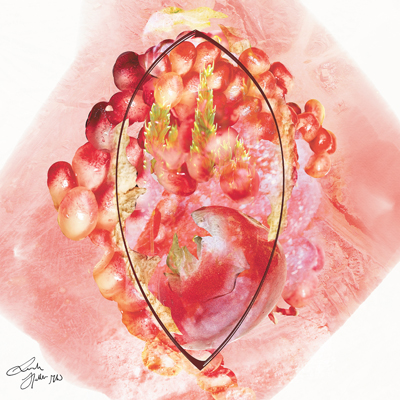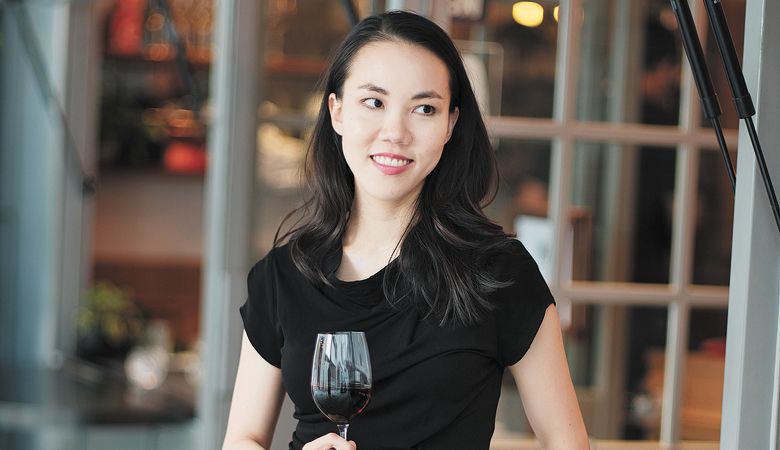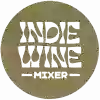Q&A: Sarah Heller MW
Somm, artist, writer, educator and more
Sarah Heller MW is a wine expert, content creator and visual artist based in Hong Kong. She is a partner and buyer for the Almásy Collection, a Central European wine brand, and brand ambassador and design collaborator for Lucaris Crystal. She sits on the faculty of the Vinitaly International Academy, is wine editor for Asia Tatler and is a consultant for WINE100, China’s largest wine competition. Heller is the creator of an art series called Visual Tasting Notes and her educational videos have over 3.5 million students. A Master of Wine — among other distinctions — she speaks English, Chinese, German, Italian and French, with some proficiency in Spanish and basic Korean. Learn more about her work www.sarahheller.com.
Q: How did you first become interested in wine?
SH: I was originally more interested in food and cooking and decided to take half a year off from college to learn more about working in restaurants. I was lucky enough to get an internship at a restaurant in Torino, Italy, and my chef was a big wine enthusiast who would take me to wineries around the Piemontese countryside in our free time. Inevitably, I soon decided I was more excited about wine than cooking, so when I returned to Connecticut to finish my degree, I decided to also get a part-time position in Manhattan at a wine importer/distributor. I’ve been immersed in the wine industry ever since.

Q: What is your approach when translating the characteristics of wine into a painting?
SH: I actually studied painting well before I got into wine, so I’ve always thought about wine in visual terms. A few years ago, I started thinking about how to use visual tools to share my subjective experience of wine. Initially, my approach was more analytical: I used a dark outline to describe the overall “shape” a wine made from start to finish, reading from top to bottom, the width of the shape would show whether a wine was bold or subtle, soft or sharp. The colors and imagery represented the aromas and textures I experienced in the wine. Over time, my approach has become increasingly evocative and abstract; the whole idea was when words fail to share an experience, sometimes visuals help us tap into something more instinctive and primal that resonates more with others.
Q: What is the latest wine that changed your perception (of the variety, region, producer, etc.)?
SH: Rivera’s Il Falcone, an Uva di Troia based wine from Puglia, has been famous in the region for its longevity since the 1950s, but I recently found it in a shop in Hong Kong and was blown away again by how sophisticated it is. Puglia is thought of as a region for gluggable reds, or else supercharged Primitivo, but Il Falcone, based on Uva di Troia, is moderate in alcohol and weight, exquisitely balanced and aromatically nuanced and absolutely the equal of many much more expensive wines from the north.
Q: Your thoughts on Oregon wine? Favorites (varietal, brand and/or region)?
SH: I love Oregon wine, and have been a supporter for years — I ran an Oregon Pinot Noir tasting for the Hong Kong Wine Society back in 2012. The only challenge is that we don’t get enough Oregon brands here in Hong Kong, so I have to get my fix when I visit my family in Seattle. Willamette Valley Pinot Noir is so beautiful, and I’ve been really excited by the diversity of styles that has emerged in recent years as the vines mature and the understanding of terroir distinctions grows, but I’ve also been really impressed by the region’s Chardonnay recently, too.
Q: Any exciting projects on the horizon?
SH: I have a few art shows here in Hong Kong and possibly around the region penciled in for the next half year that will involve many more physical pieces (at the moment most of the art I make is digital or print). My wine brand, the Almásy Collection, which brings together wines that my partners and I source and/or produce from around Central Europe, is gradually being rolled out around Asia as well. Although it has been slow going with COVID restrictions, we’ve had some unexpected success in markets like Thailand, where the local sommelier community has been very supportive.













